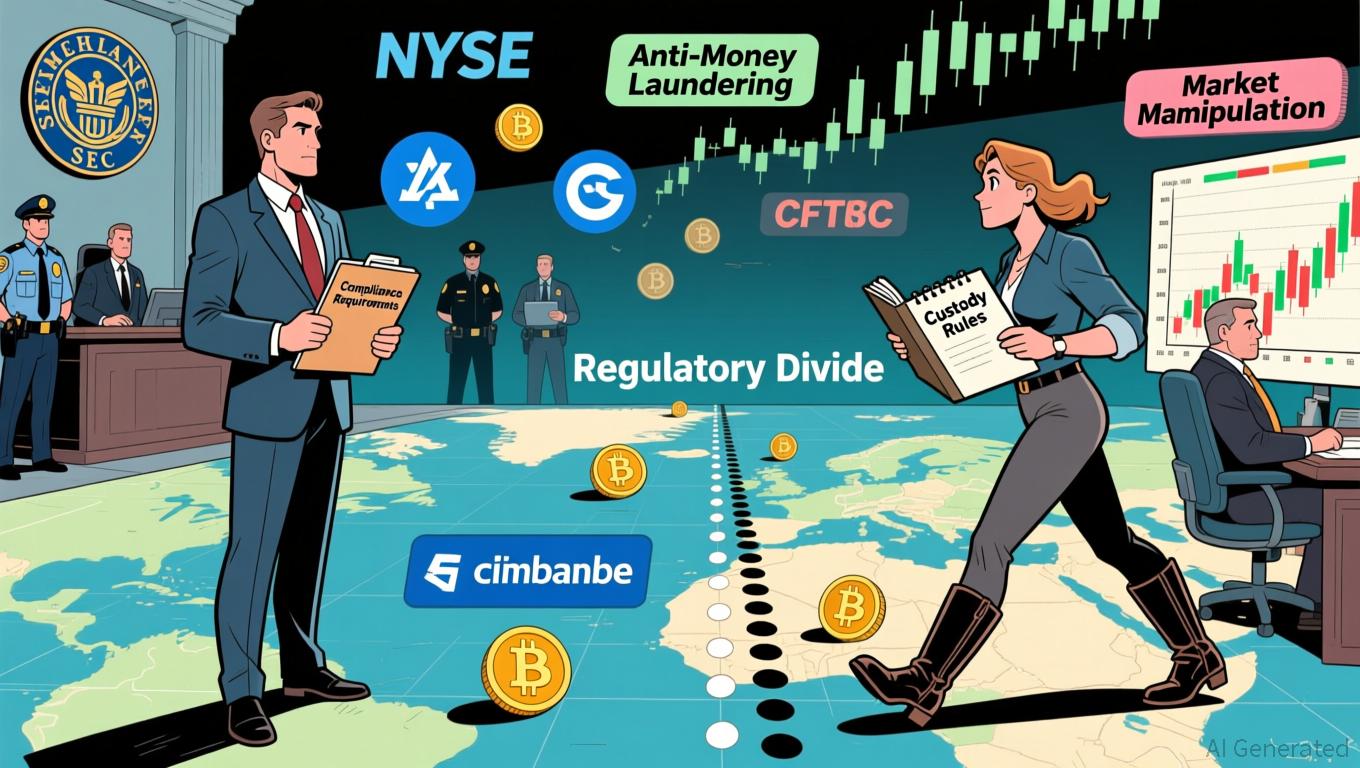Bitcoin Updates: Lawmakers Seek Solution to Ongoing SEC and CFTC Dispute Over Crypto Oversight
- U.S. Congress proposes two crypto regulatory frameworks: CFTC-led commodity model vs. SEC's "ancillary asset" approach, creating dual oversight challenges for exchanges. - Emerging projects like BlockDAG ($435M presale) and privacy coins gain traction amid market rebound, emphasizing utility over speculation post-government shutdown. - Bitcoin exceeds $102,000 with ETF inflows and Ethereum sees whale accumulation, though profit-taking risks and regulatory delays remain key headwinds. - Senate drafts and
The regulatory environment for cryptocurrencies in the United States is at a turning point as lawmakers work to resolve the ongoing jurisdictional dispute between the Securities and Exchange Commission (SEC) and the Commodity Futures Trading Commission (CFTC). Two rival Senate proposals—the Agriculture Committee’s CFTC-led structure and the Banking Committee’s SEC-oriented “ancillary asset” approach—stand to significantly alter how digital assets are classified, how custody is managed, and how exchanges operate. These legislative efforts, along with renewed enthusiasm for new crypto ventures and
The Agriculture Committee’s proposal, spearheaded by Senators John Boozman and Cory Booker, would make the CFTC the main regulator for “digital commodities” and their spot trading platforms. This model draws from established commodity oversight, mandating that exchanges, brokers, and dealers register with the CFTC and comply with rigorous standards for capital and asset custody. While

Market sentiment has improved recently after the conclusion of the 43-day U.S. government shutdown, which had previously dampened risk appetite.
Technical analysis points to ongoing
For those investing in crypto, the balance between regulatory developments, technological progress, and market cycles is becoming ever more important. While the Senate’s proposals are still under debate, the rapid progress of blockchain projects and the durability of privacy coins highlight the industry’s disruptive potential. As the 2025 market cycle unfolds, the ability to adapt to regulatory changes and seize new opportunities may be just as crucial as any on-chain metric.
Disclaimer: The content of this article solely reflects the author's opinion and does not represent the platform in any capacity. This article is not intended to serve as a reference for making investment decisions.
You may also like
First spot XRP ETF achieves record $58m day-one volume, leading 2025 ETF launches

October’s Data Breach Highlights Weaknesses in U.S. Economic Reporting
- White House officials warned critical October economic data risks permanent loss, undermining key U.S. economic indicators. - Data gaps in retail sales, industrial production, and employment could hinder policy decisions amid post-inflation recovery efforts. - Staffing shortages and operational delays expose vulnerabilities in U.S. statistical infrastructure, with critics highlighting systemic underfunding. - Alternative methods like real-time surveys may partially compensate, but gaps persist as the Fed
Chainlink Faces Key $16.50 Barrier Amid ETF Approval Competition
- Chainlink’s LINK token trades in a $13–$26 range, stalled near $16.50 resistance amid profit-taking. - Bitwise’s Chainlink ETF (CLNK) appears on DTCC registry, signaling regulatory progress ahead of SEC approval. - Technical analysts highlight $17.65 as a key breakout threshold, with potential targets at $22.47–$47. - Institutional partnerships and $89B TVS underscore Chainlink’s market credibility amid ETF competition. - SEC’s auto-effective rules and Bitwise’s simplified structure may expedite approval
Trump-Associated WLFI's Stability Strategy Disrupted as Investors Rush to Take Profits
- Jump Crypto's $15.4M WLFI token transfer to Binance triggered a 6% price drop, exposing the token's volatility amid profit-taking pressures. - WLFI partnered with AB Chain to deploy USD1 stablecoin on a high-performance blockchain, aiming to boost transaction speed and DeFi integration. - Despite token burns and buyback proposals, WLFI's 31% post-launch decline raises doubts about supply management's efficacy in stabilizing investor confidence. - Market observers track $280M open interest surge, highligh
